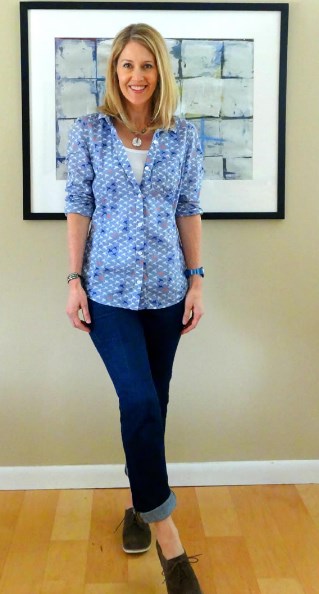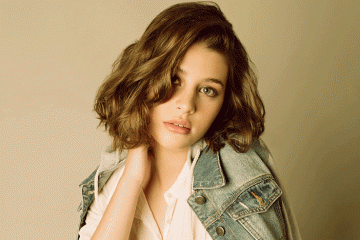The Beginner's Guide to Product Photography
If a image is worth a thousand words, a spectacular product photo deserves a thousand site gos to. Although I do not have data to support that declaration (yet), product photography can be very valuable to your ecommerce website approach.
To reach your target market members who prefer buying online, you additionally need to give your target market clear, appealing pictures of your items.

Yet product photography isn't as basic as pointing and firing. Even one of the most fundamental products require the correct devices, lighting, and also space to produce gorgeous pictures that sell shoppers right from the acquisition page.
6 Product Photography Tips ( as well as Examples) for Taking Photo That Market
Here are the pointers, instances, and also products you'll require to successfully picture as well as market your products in a way that makes your visitors and leads wish to convert.
1. Don't be afraid to utilize your mobile phone's electronic camera.
This is the part where I'm expected to encourage you to purchase a premium, 50-megapixel (MP) video camera with a 100-millimeter screw-on lens. However I'm not mosting likely to do that.
If you currently possess a camera that fits this description, benefit from it. But for several types of products, it's totally appropriate to fire product images on a smartphone.
More recent mobile phones flaunt effective cam lenses as well as settings that permit you to maximize your shots for the different kinds of light and also settings you could fire in.
If you need a lot more convincing, just look into Apple's Shot On An iPhone project as well as the photos that have actually resulted from it over the years such as this one:
2. Shoot from a tripod for photo consistency.
Before discussing tripods, I'm obliged to start with a primary regulation: Don't prop your phone against something sturdy to intend your lens toward the subject.
It's just also simple for this makeshift setup to slide about throughout the shoot and also trigger variances in your photos' look. If you rest your electronic camera on, state, a pile of books, simply be sure this arrangement does not transform over the course of the shoot.
There's no damage in holding your camera on your own when firing simply a few product images for your ecommerce internet site. Yet as your service grows, and you take more images of more products, it can be tough to standardize the product's alignment in each photo when firing handheld.
To guarantee consistency throughout your items, you'll need a tripod. And also the good news is, purchasing one isn't constantly the large, industrial-sized investment it made use of to be.
Right here are two sorts of tripods to think about.
Traditional vs. Adaptable
This is a custom tripod-- there are conventional tripods readily available for both video cameras as well as mobile phones.
A flexible tripod can be adjusted in a number of methods. You can bend its legs and also put it on various surface areas to get the angle you need.
Mobile Grip
There's often a screw on the top of your tripod which attaches to your electronic camera to hold it in position. The underside of most professional-grade electronic cameras has a screw hole just for this objective, yet smart devices can use the following adapter:
The adapter holds the sides of your mobile phone as well as can screw right into either kind of tripod, enabling you to operate the video camera regulates with the phone screen encountering external and toward you.
As soon as you determine which install you'll require, establish it up in front of your product, and also think about placing 3 pieces of tape on the ground to mark where you wish to maintain each leg of your tripod throughout the shoot.
3. Select natural light or fabricated light.
Never ever ignore exactly how specific kinds of light can enhance (or impede) your product photography. Bear in mind, buyers obtain the most effective check out an thing in person, where they can see every little thing they require to before investing in. The appropriate illumination arrangement helps you reveal those critical decision-making product functions when all internet site site visitors need to go on is a photo.
A single lighting setup may not work for every product-- a illumination plan that helps some products might compromise the look of others.
There are two sorts of light you can pick as your primary source of light: all-natural as well as synthetic light.
Natural Light
All-natural light refers to sunshine-- straightforward as that. It's additionally known as "soft light" since the sunlight casts a bigger, softer range of light than, state, a light shining straight on the Go to the website product. Ecommerce product shots grow in all-natural light if:
The product is shot outside or suggested to be read more utilized outside.
The product is made use of by, worn on, or shot with a person ( individuals have a tendency to look better in all-natural light).
You're trying to highlight the product's environments, instead of particular characteristics of the product.
Here's an instance of a shot making use of natural light:
Synthetic Light
Fabricated light consists of candles, fire, and more frequently, light bulbs. It's likewise referred to as "hard light" since it creates a smaller sized yet much more concentrated light surface area. This type of light satisfies items with physical details that need to be highlighted to thrill an on-line buyer.
As a basic rule, stay with just one type of light per photo-- natural or synthetic. Adding natural light to an unnaturally lit photo can soften a product that's implied to look sharp, as well as including artificial light to a naturally lit photo can hone a product that's indicated to look soft. You don't intend to enter your very own way.
4. Fill up or bounce your light to soften darkness.
Whether you utilize natural light or artificial light, you'll require to reduce the shadows that any kind of possible hard light casts on the contrary end of a product.
There are three means to do this:
Fill Light
Consist of one more, less-intense light to supplement your major light. This extra light is called your fill light and also is utilized as a counterbalance to soften the all-natural shadow your main light produces behind an things.
To do this, place your fill light opposite your major light so your product sits in between both lights.
Flashbulb Bounce Card
A bounce card, or reflector card, is a small card that "reflects" or "bounces" the main light back onto the surface below your product to minimize shadows.
Some bounce cards attach to the flashbulb of a specialist video camera lens to diffuse the light from the video camera's flash. This card sprays a softer light onto the subject from over your set-- as opposed to directly at it-- so you do not have lengthy shadows trail behind the item you're firing.
Standalone Bounce Card
If you're firing from a smartphone, a flashbulb bounce card isn't an choice, since you do not have a physical flash you can connect it to. Instead, make your very own standalone bounce card positioned opposite your primary light.
For novices to product photography, this bounce card can properly change your fill light, which counters the tough light from the video camera flash or lamp that's facing towards the front of your product.
5. Utilize a move or portrait mode to emphasize the product.
There isn't one best means to place your product, lights, and also bounce cards-- they can alter substantially depending upon your history. Yet don't pick a background based on what's easiest to produce. Histories need to appear like just how you want your customers to perceive your product when watching it online.
Take into consideration first whether you 'd such as a white background or a more vibrant, real-world history. There's an easy means to attain each one.
White Background: Move
For white backgrounds, it's not as easy as setting up a table against white drywall. Even smartphone video cameras can pick up little acnes on a white wall that you wouldn't see with the nude eye. To catch a best white background without any edges or blemishes, make use of a move.
A sweep is a big flexible sheet of paper, whose lower function as the surface area underneath your product and afterwards curves up into a white wall surface behind the product.
On cam, the move's contour is unnoticeable, stressing key product information as well as permitting the item to possess all of a internet site site visitor's focus.
Real-World Background: Picture Setting
Dynamic, real-world histories are extremely appealing when capturing products that have a particular use or are being modeled by a individual-- as you saw in the picture of the brief-case previously in this guide.
However, it's very easy for a real-world background to swipe the focus of the photo, making it vague which thing in the photo you're really selling.
Offer your product deepness as well as focus with picture setting, a picture setting on a lot of expert cameras, as well as additionally available on several brand-new smart devices. This setup blurs the background so the context of the product is clear but not completing against the product itself.
Below is a super awesome photo of a HubSpot pen taken in picture mode on a Google Pixel 2 (I took this image myself). You can tell the pen rests on a desk with a computer behind it, but the pen is still the prime focus for audiences:

6. Fire a range of images.
My last ecommerce photography tip to you is to not quit at one photo per product. Just as your clients look, hold, use, as well as even try out merchandise in a shop, your internet site should shoot a selection of images to simulate this very experience.
If you're shooting apparel, for example, capture the garment of clothes alone-- that is, expanded on a white surface area-- along with on a mannequin whose shade contrasts the shade of the product.
After that, for extra images, have the apparel modeled on a person, allowing you to take photos of the product from the person's different presents and angles.
Product Photography Set Up
Next, allow's summarize what we just got-- here's a checklist of quick product photography set-up suggestions that you can describe and share on your group:
• Choose a video camera-- whether that indicates using your smartphone.
• Get a tripod that works for your cam of choice.• Choose all-natural or man-made illumination-- think about which alternative is best for your product as well as setting.
• Determine whether you'll fill up or jump light.• Select move or portrait mode.

Get going With Your Product Photography
Don't really feel obligated to invest in every pointer and also tool at the same time. Use these product photography tips slowly to see what makes your shop look the most nice, and alter your method as your photography chops get better.